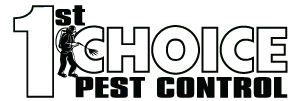Grasping Termite Damage: Indicators, Prevention, and Remedial Measures
Termites are often called the “silent destroyers” because of their ability to chew through wood, flooring, and even wallpaper undetected. Each year, termites cause billions of dollars in structural damage, and homeowners spend over two billion dollars to treat them. This makes understanding termite damage, signs of infestation, and treatment options critical for homeowners and property managers. In this blog post, we’ll dive into the signs that indicate termite presence, preventative measures to keep them at bay, and the best treatment methods available. Whether you suspect a current infestation or just want to protect your investment, the information provided will help you understand the steps you can take to safeguard your property against these destructive pests.
Identifying Common Signs of Termite Damage
Recognizing the signs of termite damage early can save homeowners significant repair costs and structural headaches. Here are the key indicators that you might have a termite problem:
- Wood damage: Termites consume wood from the inside out, leaving a thin veneer of timber or paint. When you tap the wood with a tool, it may sound hollow or papery due to the tunnels termites have created within.
- Mud tubes: Subterranean termites, the most destructive species, build mud tubes to provide moisture while they travel between their colony and food source. These tubes are typically found on exterior walls or in crawl spaces and are about the width of a pencil.
- Frass or termite droppings: Drywood termites expel their droppings from their tunnels through small holes. These droppings, known as frass, appear as small piles of pellets that resemble sawdust or coffee grounds.
- Swarmer termites or discarded wings: The presence of swarmer termites, or their discarded wings near windowsills and doors, is often the first visible sign of a termite infestation. Swarmers are termites that leave the nest to start new colonies and emerge most commonly during the spring.
These signs are critical clues that can help homeowners detect a termite infestation before it becomes severe. Early detection paired with professional assessment is key to protecting your property effectively.
Understanding the Types of Termites
Termites are classified into several types, each with unique behaviors and characteristics that affect the approach to control and prevention. Here are the three main types of termites found in homes:
- Subterranean Termites: These are the most common and destructive type in the United States. They live in soil and build extensive tunnel systems, known as mud tubes, to access food sources above ground. Subterranean termites need contact with the soil to maintain moisture levels, making their control focused on soil treatment and barrier creation.
- Drywood Termites: Unlike their subterranean counterparts, drywood termites do not require contact with the soil and can infest structures by flying directly into wood where they establish their colonies. They are typically found in attic spaces and can be identified by the piles of frass they leave behind. Treatment often involves localized or whole-structure fumigation.
- Dampwood Termites: These termites primarily infest wood with high moisture content and are less commonly found in homes. They do not usually build mud tubes but instead, rely on wood that is in contact with the ground or has a high moisture level. Preventing dampwood termite infestations involves controlling moisture and removing sources of damp wood.
Understanding which type of termite is infesting your property is crucial for selecting the appropriate treatment and prevention strategies. Each species has distinct habits that influence the potential damage to your home and the methods for effective eradication.
Preventative Measures to Avoid Termite Infestation
Preventing termites from infesting your property is significantly more cost-effective than treating an active infestation. Here are essential strategies to help you prevent termite problems:
- Reduce Moisture Levels: Termites are attracted to moisture, so it’s crucial to eliminate any moisture problems in your home. Ensure that downspouts, gutters, and splash blocks are functioning properly to divert water away from your foundation. Repair leaking faucets, water pipes, and AC units that may contribute to wood dampness.
- Maintain a Clear Foundation Area: Keep all wood, including lumber, firewood, and paper, away from your home’s foundation. This precaution helps to eliminate potential food sources for termites. Additionally, maintain an 18-inch gap between soil and any wood portions of your home.
- Seal Entry Points: Seal gaps around gas and water lines where termites could enter the home. Cracks in the foundation and around utility pipes should be filled with cement, grout, or a sealant designed for this purpose.
- Regular Inspections: Schedule annual inspections with a professional pest control service to catch early signs of termite activity. This is particularly important in regions where termites are prevalent.
- Use Treated Wood for Construction: When building or repairing your home, use wood that has been treated with termiticide. Treated wood can discourage termites and protect against infestation.
- Landscaping Considerations: Keep mulch, plants, and other landscaping materials at least a few feet away from the foundation of your house. Mulch retains moisture and can attract termites, so using less conducive materials like stone or gravel near the foundation is advisable.
By implementing these preventative measures, you can significantly reduce the risk of termites making a home in your property, thus safeguarding your investment from potential termite damage.
Professional Inspection and Detection
Regular professional inspections are crucial for early detection of termites, potentially saving homeowners from extensive damage and costly repairs. Here’s why professional inspections are essential and what they involve:
- Expertise and Experience: Professional pest control experts are trained to spot the early signs of termite activity that most homeowners might miss. They understand the specific behaviors of different termite species and can identify subtle signs of infestation such as mud tubes, wood damage patterns, and swarm patterns.
- Advanced Tools: Professionals use advanced tools and technologies for accurate termite detection. This includes moisture meters, which can detect unusual moisture levels in walls that might indicate termite activity; acoustic sensors to hear termites within the walls; and thermal imaging cameras that identify heat patterns caused by termite activity.
- Comprehensive Inspection: A professional inspector will conduct a thorough examination of both the interior and exterior of your home. This includes checking all areas where termites are likely to enter or dwell, such as basements, crawlspaces, attics, and around the foundation. They also inspect outside structures like decks and fences that could be susceptible to termite damage.
- Detailed Reports and Recommendations: After the inspection, you will receive a detailed report outlining any current infestations, risks of potential infestations, and recommendations for preventing or treating termite problems. This report can guide your next steps, whether that involves immediate treatment or ongoing preventive measures.
Investing in regular professional inspections is a proactive approach to termite management. It ensures that any termite activity is caught early, before the infestation can grow and cause more significant damage to your property.
Treatment Options for Termite Control
Once termites are detected, it’s crucial to choose an effective treatment plan tailored to the specific type of termite and the extent of the infestation. Here are the most common treatment options available for controlling and eradicating termites:
- Liquid Termiticides: These are applied to the soil around and under the foundation to create a chemical barrier that kills termites on contact and deters others from entering the structure. Some newer termiticides have a delayed effect, allowing termites to spread the chemical to others in the colony before dying, enhancing the eradication process.
- Bait Systems: This method involves placing bait stations around the perimeter of the home. These stations contain cellulose-based food attractive to termites combined with a slow-acting insecticide. Termites feed on the bait and carry it back to the colony, eventually killing other members, including the queen, thus collapsing the colony.
- Fumigation: This is a more drastic measure, typically used for severe or widespread drywood termite infestations. The entire home is covered with a tent, and a gas pesticide is released inside to penetrate all cracks and crevices, ensuring that all termites are eradicated. Fumigation requires homeowners to vacate the premises for several days until it is safe to return.
- Heat Treatment: This eco-friendly option involves raising the temperature of the affected area to a level that is lethal to termites but safe for the structure. Heat treatment is effective against drywood termites and does not involve the use of chemicals.
- Freezing: For minor infestations, particularly in small, accessible areas, freezing with liquid nitrogen can be effective. This method kills termites by rapidly lowering the temperature in their habitat.
Each of these methods has its advantages and considerations, and often, a combination of treatments is employed to ensure complete eradication of the colony. A professional pest control service can assess the situation and recommend the most appropriate treatment based on the type of termites, the extent of the infestation, and the layout of your home.
Conclusion
Understanding the signs of termite damage, knowing the different types of termites, and implementing effective prevention strategies are essential steps in protecting your property from these destructive pests. However, once an infestation is detected, prompt and professional treatment is crucial to mitigate damage and prevent future issues.
We encourage all homeowners to stay vigilant and proactive in the fight against termites. Regular inspections by qualified professionals can catch early signs of termite activity, potentially saving thousands of dollars in structural repairs. If you suspect termite activity in your home, do not hesitate to act. Contacting a professional pest control service like 1st Choice Pest Control can provide you with the expertise and treatment options needed to effectively tackle the problem.
Remember, dealing with termites is not just about eliminating an immediate nuisance; it’s about investing in the long-term health and safety of your home. By understanding the risks, taking preventive measures, and utilizing professional services when necessary, you can maintain a termite-free home and enjoy peace of mind knowing your investment is secure.

